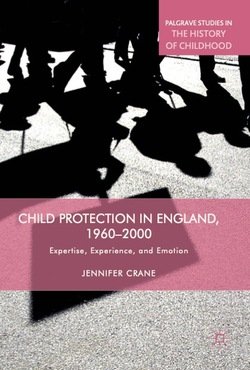By The Child Safeguarding Practice Review Panel
This report describes very shocking things about the lives, distress and pain of children who had horrific abuse perpetrated on them, by adults who should have cared for them and kept them safe. What is even more disturbing is that safeguarding agencies were unable to listen, hear and protect these children. This report, and the evidence on which it is based, stands as both an invitation and a challenge to government and professionals, to respect and recognise the voices and experiences of the children at the heart of this review, so that children in the future might receive the help and protection that should be their undeniable right. Forty years on from the publication of the Cleveland Report (1988), we must ask why the sexual abuse of children in the family environment provokes undoubted and profound professional unease, and in so doing, systematically silences and shuts out children from the protection and support they need. More recently the Independent Inquiry into Child Sexual Abuse (IICSA) evidenced the countless ways in which organisations, professionals and government have too often denied and deflected attention from the realities of child sexual abuse. This was powerfully demonstrated in the courageous testimonies of adult survivors in IICSA’s Truth Project. Over the past 20 years or so, the light on the sexual abuse of children within families has gradually dimmed. We have witnessed a worrying evaporation of the skills and knowledge that professionals (leaders and practitioners) must have to work confidently and sensitively in this complex area of practice. This dilution of focus and expertise may be partly explained by the greater public and professional attention on the sexual abuse of children in institutions, by ‘famous’ people and on the sexual exploitation of children outside their home. This was undoubtedly urgently required, but it may also have drawn our eyes away from the more common experience for children, of sexual abuse in their families. Despite commonalities between different types of sexual abuse, the ‘othering’ and moral outrage that can accompany media attention on extra-familial sexual abuse has perhaps distracted attention from the more commonplace nature of familial abuse. In turning our attention away from the latter, we have undermined the confidence and capability of professionals to identify and respond to sexual abuse in families.
In over a third of the reviews, the people who harmed children (98% of whom were men) were known to pose a risk of sexual harm. The risk of harm was known (and often over many years) but ignored, denied or deflected. Therefore, it is often not a matter of professionals not knowing about the risk of abuse, but rather of a system that simply does not see, notice and comprehend this type of risk. The review highlights too that shame, fear and concern about betraying their families means that children struggle to tell others what is happening. A profound change is overdue in how professionals, in their different roles, engage with and talk to children about abuse. This involves wholesale change in training, supervision and leadership. These challenges are not about the failings of individuals or one agency to do their job. They are systemic and of a multi-agency nature. This is emphasised by the fact that in 2022/23 just 3.6% of children on child protection plans were there because of a primary concern about child sexual abuse (and tellingly this is at its lowest for a very long time). This may be because of institutionalised avoidance and disinclination to name sexual abuse as a concern, and also because safeguarding agencies are failing to notice when children are at risk of this form of harm. It may also reflect a system that too often is criminal justice led. A national strategic response, led by government, is needed. This will involve investment in better working together, not only between the trinity of safeguarding partners (local authorities, police and health) but also with schools and other education providers, with the criminal and family justice system (including probation), and with the third sector. The voices and testimonies of the children at the heart of this report make plain that we cannot turn our minds away from acknowledging the reality of sexual abuse for too many children. The child whose quote forms this review’s title reminds us of our responsibilities to notice what is happening to children. If we do not, then those perpetrating abuse will continue to wield their corrosive and abusive power in many children’s lives.
London: Child Safeguarding Practice Review Panel, 2024. 139p.











